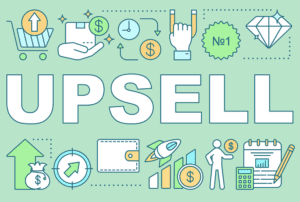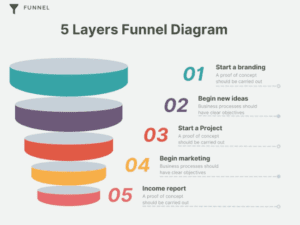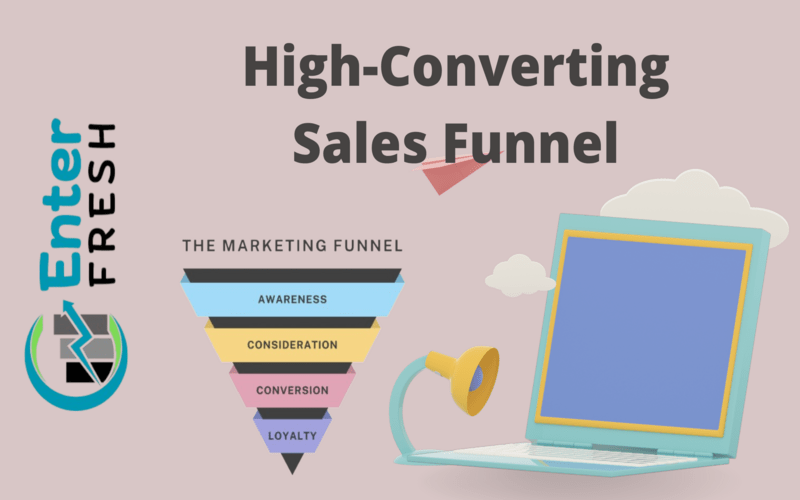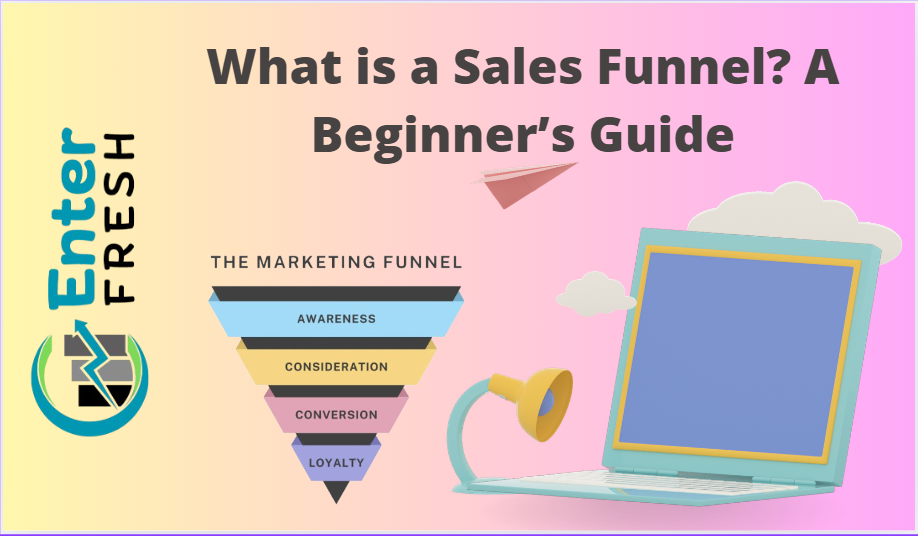In the world of sales and marketing, upselling is a powerful technique that can significantly increase revenue while enhancing customer satisfaction. But what does it mean to upsell, and how can businesses implement this strategy effectively? In this guide, we’ll break down the concept of upselling, explore its benefits, and share actionable strategies for implementing upselling in various types of businesses.

What Does It Mean to Upsell?
Upselling is a sales technique where a business encourages a customer to purchase a higher-end version of the product or add additional features, services, or complementary products to increase the overall value of their purchase. The goal of upselling is to enhance the customer’s experience with a product or service by offering more premium or advanced options that align with their needs.
For example:
- E-commerce stores: Recommending an upgraded model of a product or an extended warranty.
- Restaurants: Suggesting a larger portion size or a more premium drink option.
- Software companies: Offering a premium package with additional features.
Upselling benefits both the business and the customer: the business increases its average transaction value, while the customer gets a more comprehensive solution or improved experience.
Why Upselling is Important
When implemented effectively, upselling can lead to significant business benefits, such as:
- Increased Revenue: By encouraging customers to spend more, businesses can boost their revenue without needing to acquire new customers.
- Improved Customer Satisfaction: If the upsell is valuable and relevant, it can genuinely improve the customer’s experience, leading to higher satisfaction and loyalty.
- Higher Average Order Value (AOV): Upselling raises the value of each transaction, increasing the AOV, which is a key metric for measuring profitability.
- Customer Retention: Customers who find value in premium or enhanced products are more likely to become repeat buyers.
- Competitive Edge: Providing enhanced or premium options helps your product stand out from competitors by catering to customers looking for high-quality solutions.
Key Differences Between Upselling and Cross-Selling
- Upselling: Encouraging customers to buy a more expensive or upgraded product version they’re already considering.
- Cross-selling Involves Suggesting related or complementary products that enhance the primary purchase. For example, if a customer buys a laptop, cross-selling would involve suggesting a laptop bag or an external mouse.
While upselling enhances the existing purchase with a better option, cross-selling broadens the purchase with additional products. Both strategies can be highly effective when used together, as they allow businesses to maximize the value of each customer interaction.
Upselling Techniques That Work
To successfully upsell without appearing pushy or sales-driven, consider these proven techniques:
1. Understand Customer Needs
Successful upselling starts with understanding the customer’s needs, pain points, and preferences. Rather than pushing a more expensive product, approach upselling as a way to offer an improved solution to meet their specific needs. For instance:
- If a customer is buying a camera, they may benefit from a higher-end model if they plan to use it for professional photography.
- A customer purchasing skincare products may appreciate an upsell of a premium serum tailored to their skin type.
When you tailor upsell offers to meet individual customer needs, it’s more likely that they’ll view the upsell as valuable and relevant, increasing the chances of a positive response.
2. Highlight Benefits, Not Just Features
One common mistake in upselling is focusing solely on the product’s features rather than its benefits. Customers are more interested in how the upgrade will solve their problems or enhance their experience. To effectively upsell:
- Explain how the premium version of a product will save them time, increase efficiency, or provide a superior experience.
- Use language that focuses on benefits, such as “This option will help you get the best results” or “With this premium version, you’ll have access to advanced features that make your experience smoother.”
By clearly communicating the benefits, you make it easier for customers to see the value of the upsell.
3. Offer Tiered Pricing Options
Another effective upselling technique is to offer tiered pricing. When customers see a range of pricing options (e.g., basic, standard, and premium), they’re often drawn to the mid-range or premium options. This technique is known as price anchoring:
- Customers tend to choose a higher-priced option when they see the added value it offers compared to the lower-tier options.
Tiered pricing provides flexibility, allowing customers to choose the option that best fits their needs and budget.
4. Show Social Proof and Customer Testimonials
When customers see that others have benefited from the upgraded version of a product, they’re more likely to consider it. Here’s how to incorporate social proof:
- Testimonials: Share reviews from customers who found value in the premium product or upgrade.
- Case Studies: Highlight success stories from users who achieved positive outcomes with the premium option.
- Product Reviews: Display user ratings and reviews to build trust and credibility.
By providing real-life examples, you make the upsell more relatable and credible.
5. Use Timing Wisely
Timing is essential for successful upselling. Offering an upsell at the right moment can make a huge difference:
- During the Purchase Process: Presenting an upsell on the product page, in the shopping cart, or at checkout can encourage customers to decide without delaying the purchase.
- After the Initial Purchase: If a customer has already made a purchase, you can use follow-up emails or targeted promotions to upsell complementary or upgraded products.
- Within a Free Trial: For SaaS businesses, offering an upsell towards the end of a free trial can encourage users to upgrade to the full version before their trial expires.
The key is to present the upsell when the customer is already engaged and in the mindset to purchase.
6. Provide a Limited-Time Offer
Creating a sense of urgency can make your upsell more appealing. Limited-time offers encourage customers to act quickly, reducing the likelihood of hesitation or second thoughts. Some ways to introduce urgency include:
- Offering a discount or bonus feature if they upgrade within a specific timeframe.
- Adding a countdown timer to show when the offer expires.
- Highlighting stock availability if you’re upselling a physical product.
Urgency can be a powerful motivator, but it’s essential to use it sparingly to avoid appearing too pushy.
7. Bundle Products for Added Value
Product bundling is an effective upselling strategy where you combine related products into a package that offers greater value than purchasing items individually. This is especially effective in retail and eCommerce settings:
- A customer buying a smartphone could be offered a bundle with a screen protector, case, and portable charger at a discounted price.
- A software subscription could offer a bundle with add-ons or extra features at a reduced rate.
By bundling products, you provide a higher-value option that can be more appealing to customers, as they get more for their money.

Common Mistakes to Avoid in Upselling
While upselling can be highly effective, some common mistakes can reduce its effectiveness:
- Being Too Aggressive: Overloading customers with upsells can feel pushy and drive them away. Instead, present the upsell as a suggestion rather than a requirement.
- Offering Irrelevant Upsells: The upsell should enhance the customer’s current purchase. Irrelevant offers can appear random and disrupt the customer experience.
- Not Adding Clear Value: If the upsell doesn’t provide clear value, customers are unlikely to see the benefit. Always emphasize how the upsell will improve their experience or solve their problem.
- Ignoring Customer Preferences: Personalized upselling works best. Use customer data, browsing history, and purchase history to offer upsells that align with their interests.
Upselling in Different Industries
Upselling can be customized to fit nearly any industry. Here are a few examples of how upselling is applied across different sectors:
E-Commerce
- Product Upgrades: Recommend a higher-end model with additional features.
- Complementary Accessories: Offer items that enhance the primary product, like accessories for a smartphone.
SaaS
- Feature Upgrades: Offer premium features or tools not available in the basic plan.
- Extended Plans: Encourage users to switch from monthly to annual plans, often at a discounted rate.
Hospitality
- Room Upgrades: Offer guests an upgrade to a suite or room with a view for an additional fee.
- Additional Services: Promote add-ons like spa services, guided tours, or dining experiences.
Fitness and Wellness
- Class Upgrades: Suggest a higher membership tier that offers additional classes or facilities.
- Personal Training: Recommend personal training sessions or specialized coaching.
Tracking and Measuring Upselling Success
To assess the effectiveness of your upselling strategies, it’s essential to track key metrics, such as:
- Average Order Value (AOV): A measure of the average amount spent per transaction, which indicates the success of upselling.
- Customer Satisfaction: Gather feedback to ensure the upsell improves their experience.
- Repeat Purchases: Upsells should contribute to long-term customer loyalty and repeat purchases.
Use analytics tools to monitor these metrics and adjust your upselling strategies based on data.
Conclusion: Why Upselling is Key to Business Growth
Upselling is more than just a tactic for increasing revenue; it’s a valuable tool that enhances customer satisfaction by offering tailored solutions that meet their needs. By carefully implementing upselling strategies like product bundling, tiered pricing, and personalized recommendations, businesses can foster loyalty, boost the average order value, and stand out in competitive markets.
For sustainable growth, focus on providing genuine value in your upsell offers. When done right, upselling builds stronger customer relationships and elevates your brand’s reputation as a provider of comprehensive, customer-centric solutions.


